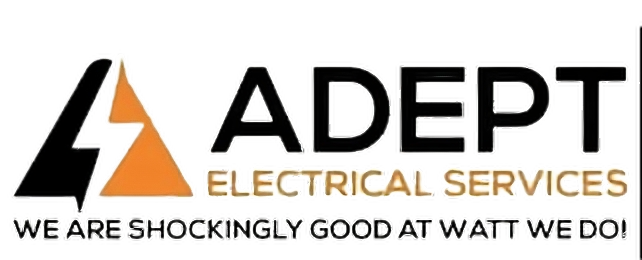In the fast-paced construction industry, managing multiple applications for different aspects of business operations is becoming increasingly problematic. This fragmented approach leads to inefficiencies, data silos, and communication breakdowns, directly impacting productivity and growth. The solution? Transitioning to an all-in-one platform like Ontraccr. This article examines the pressing need for construction businesses to move away from juggling multiple apps towards adopting a unified solution. We'll explore how an all-in-one construction management platform can address technical, financial, and operational challenges head-on, providing a streamlined, efficient, and scalable approach to managing construction projects. With Ontraccr's expert guidance and comprehensive support, businesses can ensure a smooth migration, unlocking the full potential of digital transformation in the construction sector.
Brief overview of the challenges and inefficiencies associated with using multiple applications in construction business

In the construction sector, as well as in other industries, companies often begin their digital journey by adopting a variety of free or low-cost applications. This initial strategy, aimed at cost savings, quickly becomes counterproductive as the business expands and the workforce diversifies. New hires often bring preferences for specific applications based on their previous experiences, leading to a fragmented IT landscape. This ad-hoc accumulation of software solutions evolves into a complex, unwieldy stack, where data resides in isolated silos, processes operate independently, and vital documentation is scattered across multiple platforms. The result is a significant drain on time and resources, as consolidating data for comprehensive analysis or reporting becomes a Herculean task.
According to a McKinsey report on digital transformation, the construction sector is among the least digitized industries, which exacerbates the impact of these inefficiencies. The report highlights that companies using fragmented systems can spend up to 35% of their time on non-productive activities, including searching for information and managing communication across different platforms (McKinsey & Company, "The Next Normal in Construction").
This scattered digital environment not only impedes operational efficiency but also stifles growth by obscuring valuable insights and complicating strategic decision-making processes. The inefficiencies of this approach are further magnified by the hidden costs associated with managing multiple applications, including but not limited to increased training requirements, subscription fees, and the need for custom integrations.
The importance of consolidating business operations into a single, unified construction management platform
McKinsey's research on digital transformation suggests that companies adopting integrated digital platforms can achieve up to 15% improvement in productivity and up to 20% reduction in project costs (McKinsey & Company, "Digital Transformation: Raising the Bar in Construction"). This consolidation enables businesses to streamline processes, improve data accuracy, and reduce the time spent on administrative tasks.
Consolidating business operations onto a single, unified platform is crucial for addressing the inefficiencies and challenges posed by a disparate software ecosystem. A unified platform streamlines business processes, centralizes data management, and fosters collaboration by providing a single source of truth for the entire organization. This consolidation enables more efficient workflow management, reduces the risk of data duplication or loss, and significantly lowers IT complexity, making it easier for teams to focus on their core duties rather than on navigating a labyrinth of applications. Furthermore, a single platform approach enhances data security and compliance, as it simplifies the enforcement of consistent security policies and regulatory standards across the organization. From a strategic perspective, a unified platform offers powerful analytics and reporting tools, giving leaders comprehensive insights into their operations, facilitating informed decision-making, and unlocking new opportunities for innovation and growth. By eliminating the fragmentation of tools and information, companies can achieve not only operational excellence and cost efficiency but also a competitive edge in the fast-paced construction industry.
Lastly, a unified business management platform fosters innovation by providing a robust foundation for deploying advanced technologies such as AI, IoT, and predictive analytics. Deloitte insights reveal that companies leveraging integrated platforms for innovation are three times more likely to outperform their peers in revenue growth and profitability (Deloitte, "Tech Trends 2023").
Reasons for migrating to an all-in-one construction automation platform
- Cost Efficiency: Fragmented IT infrastructures significantly drive up expenses. A Gartner study reveals that organizations with disjointed technology ecosystems incur up to 30% additional costs. These arise from redundancies and inefficiencies in managing data and maintaining applications, underscoring the financial advantages of streamlined platforms (Gartner, "Cost Optimization in the Age of Digital Business").
- Scalability and Performance Gains: Integrating operations onto a unified digital platform can substantially boost efficiency and reduce overhead. These benefits are particularly pronounced in sectors like construction, where project management and execution demand high levels of efficiency and adaptability (McKinsey & Company, "Digital Transformation: Raising the Bar in Construction").
- Strengthened Compliance and Security: The transition to an all-in-one platform also fortifies data security and compliance, critical in industries handling sensitive information. The Ponemon Institute reports a 28% reduction in security breaches among organizations with consolidated IT platforms. This improvement stems from enhanced data oversight and tighter control mechanisms, making a compelling case for unified systems in safeguarding against data vulnerabilities (Ponemon Institute, "Cost of a Data Breach Study").
By focusing on these key areas, organizations can make a more informed decision on the strategic move to an all-in-one platform, leveraging its comprehensive benefits to drive growth, enhance security, and optimize operational efficiency.
The Hidden Dangers of a Fragmented Software Ecosystem and DIY Solutions

Sticking with a fragmented software stack or opting for DIY all-in-one solutions presents significant risks that can undermine the stability and growth of any company.
- Technical challenges, such as data loss or corruption and integration compatibility issues, can jeopardize the integrity of business operations, leading to critical information being misplaced or rendered unusable. These integration challenges often stem from attempting to force disparate systems to work together, which they were not designed to do, causing system instability or failure.
- Financial challenges also loom large, with unforeseen costs and budget overruns becoming a common headache. DIY solutions or managing multiple applications can initially seem cost-effective but often lead to significant additional expenses in customization, integration, and maintenance. Moreover, the return on investment (ROI) may fall short of expectations as the hidden costs of these approaches eat into the projected benefits, making it difficult to achieve financial objectives.
- Operational challenges include downtime and disruptions to business processes, which can result from trying to update, maintain, or integrate multiple systems. This downtime not only affects immediate productivity but can also lead to long-term damage to customer trust and business reputation. Additionally, employee resistance is a significant hurdle, as staff may be reluctant to adopt new processes or systems that result from fragmented or makeshift solutions, further impeding operational efficiency and innovation.
In summary, the risks associated with maintaining a fragmented software stack or attempting a DIY all-in-one solution far outweigh the perceived benefits, making it crucial for companies to consider more integrated, professional solutions that can reliably support their operations and growth.
Migrating to a Unified All-in-One Construction Management Platform: A Guide for the Construction Industry with Ontraccr
Transitioning from a fragmented software ecosystem to a unified all-in-one solution like Ontraccr is a pivotal step for construction businesses seeking to streamline operations and enhance efficiency. Ontraccr's commitment to providing professional consultation and guidance at every step ensures a smooth and successful transition. Here’s how to approach this migration:
- Identify Your Current ‘Tech Stack’:
Begin by cataloging all applications and tools currently in use across various departments. This comprehensive list will serve as a baseline for understanding your existing technological setup and how Ontraccr can enhance it. - Evaluate Essential and Redundant Features in Current Apps:
Assess each app in your tech stack, focusing on identifying critical features essential for your operations and those that are redundant or ineffective. This step helps in pinpointing functionalities that are vital for your business and which can be optimized or replaced by Ontraccr’s platform. - Compare and Contrast Features with Ontraccr’s All-Inclusive Platform:
Examine how the essential features of your current apps align with those offered by Ontraccr. Determine if Ontraccr meets or exceeds these requirements. Also, assess how Ontraccr’s features differ and any additional benefits it may offer, such as improved efficiency or functionalities that address gaps in your current tech stack. - Consolidate Apps into Ontraccr’s Platform:
Decide which current apps can be effectively replaced by Ontraccr’s all-in-one platform. This step involves strategic decision-making to optimize your tech infrastructure with the aim of reducing redundancies while maintaining essential functionalities. - Perform an ROI Analysis with Ontraccr:
Conduct a Return on Investment analysis to evaluate the financial and operational benefits of transitioning to Ontraccr’s unified platform. This should include direct cost savings and indirect benefits such as increased efficiency, reduced data silos, and streamlined processes. - Develop a Phased Replacement Strategy with Ontraccr:
Plan a phased approach for transitioning to Ontraccr in collaboration with our team. This strategy helps minimize operational disruptions and ensures a smooth transition to the new platform. - Plan Migration with Ontraccr’s Support:
Collaborate with Ontraccr to develop a migration strategy. This includes exporting data from your existing apps into .csv files, which can then be efficiently imported into Ontraccr’s platform. The support and guidance from Ontraccr are vital in facilitating a seamless data transfer and integration process. - Implement Training and Onboarding Plan with Ontraccr:
Develop a training and onboarding plan for your team, utilizing Ontraccr’s resources and support. Involve key internal stakeholders and leverage Ontraccr’s expertise to ensure effective adoption and maximization of the platform’s capabilities.
Case Studies of Successful Migrations to Ontraccr
The transition to Ontraccr's unified construction automation platform has revolutionized operations for several construction businesses, demonstrating the tangible benefits of migrating from a fragmented software ecosystem to an all-in-one solution. Here are a few case studies that showcase this transformation:

Bath Boys: Streamlining Operations and Reducing Administrative Time
Bath Boys, a construction company specializing in bathroom renovations, faced challenges managing their operations due to the use of multiple, disjointed applications. By migrating to Ontraccr, they experienced a significant reduction in administrative time by 30%, allowing them to focus more on their core activities and less on paperwork and coordination.

Rocky Mountain Solar Co.: Enhancing Project Management and Efficiency
Rocky Mountain Solar Co., a provider of solar energy solutions, struggled with project management and real-time communication due to the limitations of their existing software tools. The adoption of Ontraccr not only improved their project management capabilities but also enhanced overall efficiency by providing a comprehensive overview of all projects in a single dashboard.

Stairline Railings: Achieving Seamless Integration and Improved Productivity
Stairline Railings, known for their custom railing solutions, faced hurdles with data silos and inefficient workflows. The transition to Ontraccr enabled them to achieve seamless integration of their operations, from design to installation, resulting in improved productivity and a more streamlined workflow.

Adept Electrical: Cutting Overhead and Boosting Productivity
Adept Electrical encountered significant challenges with manual processes for logging hours, costs, and managing documents. The switch to Ontraccr cut their administrative workload in half, saved significant time on logging and documentation, and boosted productivity by 30% through automation and real-time updates.
These case studies vividly illustrate the advantages of moving to a unified platform like Ontraccr. By eliminating the need for multiple applications and manual processes, these companies have not only streamlined their operations but also unlocked new growth opportunities, demonstrating the substantial ROI that can be achieved through digital transformation in the construction industry.
Conclusion
Migrating to an all-in-one construction management platforms like Ontraccr, with the guidance and expertise of professional consultants, is a strategic move that can significantly benefit your construction business. This step-by-step guide ensures that your transition is well-planned, executed efficiently, and leads to sustained success and growth in the digital age.







